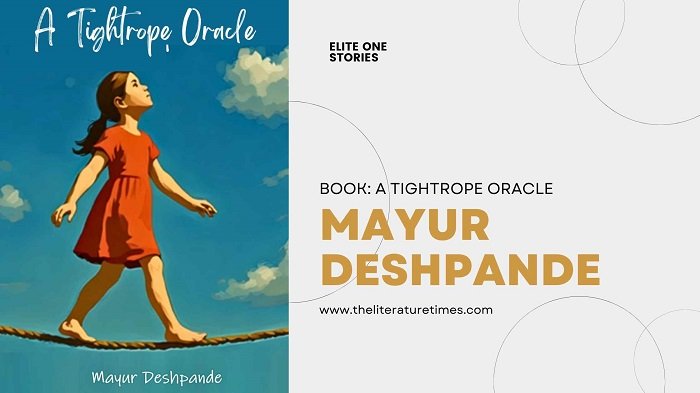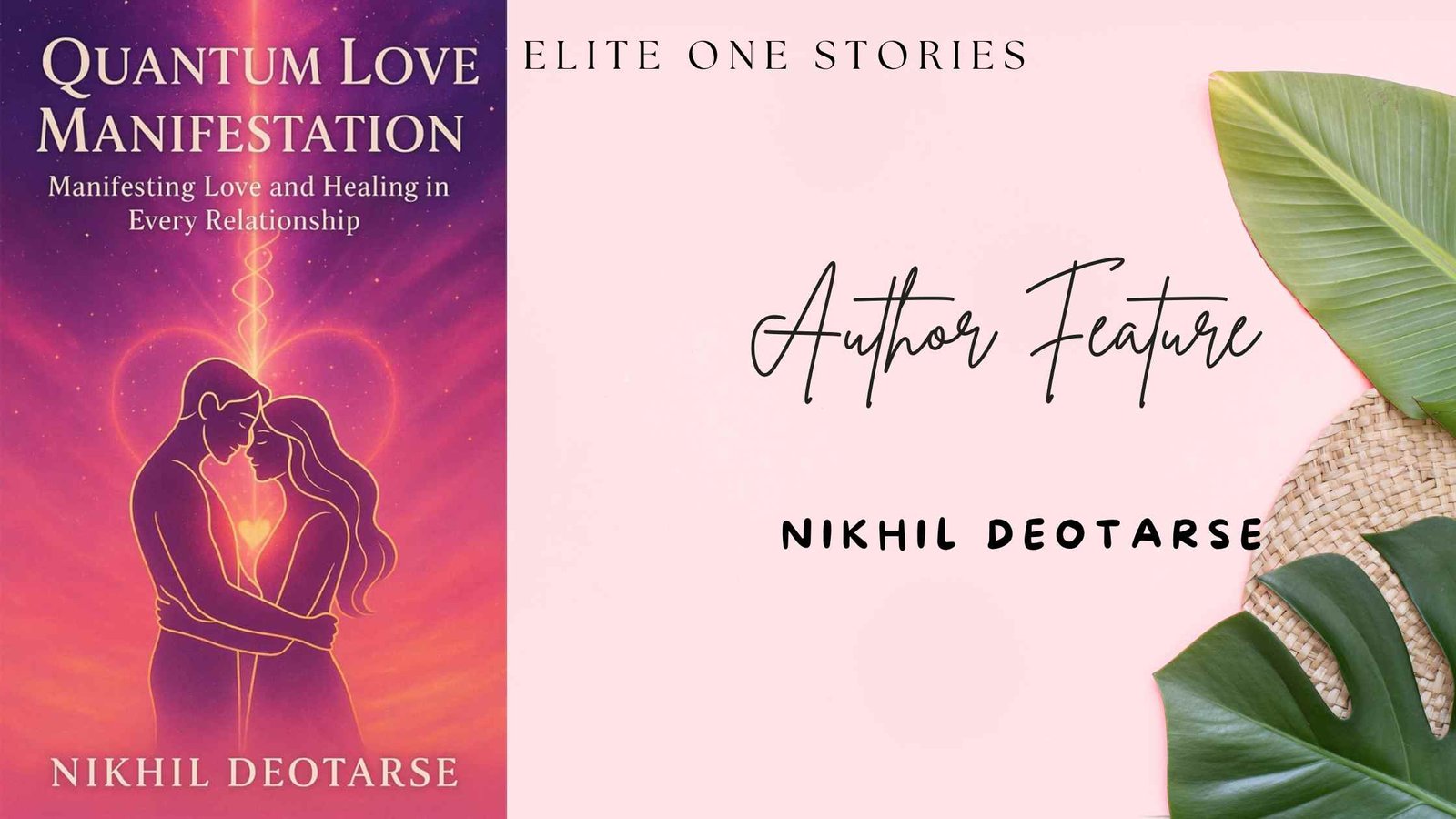Tamanna Nambiar has achieved something rare with Nadia — a novel that is both immediate and timeless, personal yet universal. With great empathy and insight, she captures the enduring strength of the human spirit, even in its most vulnerable moments. Her debut leaves a lasting impression, promising a bright future for a young writer with the courage to tell stories that matter.
The Interview
What inspired you to write Nadia?
I was really moved by the strength of the Ukrainian people during the war. As I followed the
Russia-Ukraine conflict, I began to see that behind all the headlines and politics were real people whose lives had been turned upside down. I wanted to tell their stories—the fear and loss, yes, but also the survival and the hope that carried them through.
You dedicate Nadia to the people of Ukraine. Can you share how their resilience shaped this story?
Absolutely. I was inspired by the courage of Ukrainians—ordinary people, from civilians to soldiers, standing strong even when everything was against them. Even in their darkest moments, they held on to their families, their culture, and who they were. That strength shaped Nadia’s journey. Her world falls apart, but she keeps going, finding hope and small moments of kindness in places she never expected.
How did writing Nadia impact you personally? Was it emotionally challenging?
Writing Nadia was an emotional journey. I’ve never lived through war myself, but reading the stories of refugees and survivors really opened my eyes—it was heartbreaking and, at times, hard to process. There were moments when I had to step away because Nadia’s pain felt so real, so heavy. But I kept going because I knew her story mattered. It was something that needed to be told.
The book deals with war, displacement, and resilience. How did you research these themes?
I spent hours reading survivor stories, digging through historical records, and listening to first-hand accounts from Ukrainian refugees. I also looked at past conflicts to understand how war affects people—not just physically, but emotionally and mentally. At the same time, I kept up with what was happening in Ukraine in real time, because I wanted the book to capture more than just the destruction. I wanted it to reflect the deep emotional toll of being forced to leave everything behind.
What was the biggest challenge in writing a war narrative from Nadia’s perspective?
The hardest part was making sure Nadia’s story stayed personal and real—not just another story about war. I wanted readers to see everything through the eyes of a 16-year-old girl who had dreams, friends, and a normal life before it all fell apart. It was tough to balance her feelings with the bigger conflict, because war can feel so distant and overwhelming. But I didn’t want to lose the small, human moments that make her journey something people can truly connect with.
About the Story & Characters
Can you tell us about Nadia as a character? What makes her story unique?
Nadia is strong, but she’s also vulnerable. She’s not a warrior or a hero—just a teenage girl whose life changes overnight. Her journey isn’t only about running from danger; it’s about facing grief, fear, and everything she’s lost. What makes her story special is how personal it is. It’s not just about war—it’s about the little things: memories with her friends, her bond with her mother, and the quiet, emotional battles she fights inside herself every day.
How did you develop Nadia’s relationships, particularly with Kat, Nina, and Ivan?
Nadia’s relationships are really the heart of the story. Kat is the friend who never leaves her side—she’s all about loyalty and strength in the middle of chaos. Nina brings warmth and kindness, showing that even in the worst moments, people can still care deeply. And Ivan represents love, but also the sadness of things left unfinished. Each of these connections shows a different part of what Nadia loses and how she grows. Because in war, it’s not just lives that are taken—it’s the moments, the relationships, and the futures that could’ve been.
Nadia’s experience blends personal trauma with larger historical events. How did you balance these elements in your storytelling?
I really made an effort to keep Nadia’s emotions at the center of the story. The history and politics are important, but I didn’t want them to take away from her personal journey. The war is always in the background, but what matters most is how Nadia feels—what she’s thinking, what she’s afraid of, and the people she holds close. By showing the war through her conversations, her memories, and even her dreams, I was able to keep the focus on her experience while still reflecting the bigger picture.
How does Nadia explore themes of survival, loss, and hope?
At its heart, Nadia is about survival—not just staying alive, but holding on emotionally and mentally. The losses she faces are huge—her home, people she loves, even her sense of who she is. But what keeps her going are the small moments of hope—a kind stranger, a meal shared, or just the strength to take one more step. That’s what the story really says: even in the darkest times, there’s always a flicker of light to hold on to.
Did any of the characters evolve differently than you planned initially?
Yes! Ivan was actually meant to survive at first. But as the story grew, I realised his death had a kind of emotional weight that felt necessary—it reflected the truth of war, where not everyone gets a proper goodbye. And Kat really surprised me. She started off as just a friend, but she became so much more—a source of strength for Nadia, someone who shows that even after deep loss, life still moves forward.
About the Book’s Themes
Nadia humanizes the war in Ukraine beyond news headlines. Why was this important to you?
War is so often reduced to numbers—casualties, statistics, strategies. But behind every number is a real person, a story, a family that’s been torn apart. I wanted to move past the political headlines and show what war feels like through the eyes of one girl whose world is turned upside down. It’s a way of reminding us that war doesn’t just happen to countries—it happens to people.
You highlight the struggles of refugees. What message do you hope readers take from this?
Refugees aren’t just people running away—they’re people trying to rebuild. They had lives, dreams, and plans that were suddenly put on hold. Through Nadia’s story, I hope readers see that seeking refuge isn’t a choice—it’s what people do to survive. And sometimes, just a little empathy and support can change how someone begins again.
Family and friendship play a huge role in Nadia. How do these relationships shape the story?
They’re the emotional anchors of the story. War can destroy homes, but it can’t erase love or the bonds we share. Nadia’s connection with her mother, her friends, and even the strangers she meets along the way show that surviving isn’t just about making it out alive—it’s about holding on to the people and moments that give you a reason to keep going.
How did you feel holding a physical copy of Nadia for the first time?
It felt surreal. Holding the book in my hands—seeing my words in print—suddenly made it all real. It wasn’t just something on my laptop anymore; it was something I could share with others, something that might move people I’ve never even met. More than anything, I just felt incredibly grateful—to my family, my friends, and everyone who believed in me and encouraged me to tell this story.
About the Future
Do you see yourself writing more books about war, resilience, or survival?
Absolutely. I think stories of survival—whether it’s through war, displacement, or personal struggles—really matter. Nadia was about war, yes, but at its heart, it was about resilience, identity, and holding on to hope. I want to keep writing stories that shine a light on the strength of the human spirit, especially during the hardest times.
What’s next for you as an author? Are you working on another book?
Not at the moment! I do have a few ideas scribbled down in my notebook, but right now I’m swamped with IB deadlines, so writing is on pause for a bit. I’m hoping to pick it back up during the summer break when I have more time and headspace to really focus on it.



